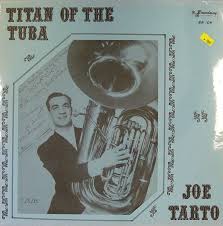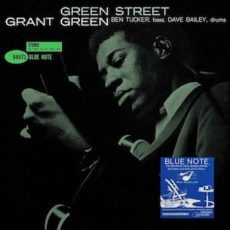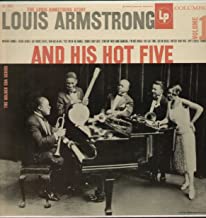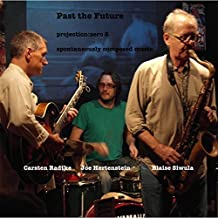
Daily Dose Of Jazz…
Joe Tarto was born Vincent Joseph Tortoriello on February 22, 1902 in Newark, New Jersey. He played trombone from age 12 before settling on tuba as a teenager. When World War I hit, he enlisted and played in an Army band where he was wounded, and received his release in 1919.
The 1920s saw him working with Cliff Edwards, Paul Specht, Sam Lanin, and Vincent Lopez, in addition to doing arrangement work for Fletcher Henderson and Chick Webb and playing in pit orchestras on Broadway. Throughout the 1920s recording copiously, he accompanied among others, Bing Crosby, The Boswell Sisters, Ethel Waters, Eddie Lang, Joe Venuti, Miff Mole, Red Nichols, The Dorsey Brothers, Bix Beiderbecke, and Phil Napoleon.
During the 1930s he spent two years playing with Roger Wolfe Kahn, then worked extensively as a session musician both on tuba and double bass. He also played with radio ensembles and in theater and symphony orchestras. He remained active as a performer into the 1980s, playing in Dixieland jazz revival groups in his last years. Tubist and bassist Joe Tarto passed away on August 24, 1986 in Morristown, New Jersey.
More Posts: bandleader,bass,history,instrumental,jazz,music

Requisites
Green Street ~ Grant Green | By Eddie Carter
Grant Green steps into the spotlight with the second of four albums he released in 1961. Grant was one of the most interesting guitarists in jazz, possessing a gorgeous tone, speed of execution, and a distinctive lyricism in his playing that proved remarkably durable. He never failed to please his critics, fans, and peers throughout his career, but his time at Blue Note was particularly successful. Green Street (Blue Note BLP 4071/BST 84071) is a trio album like his label debut, Grant’s First Stand.
However, here the guitarist takes a different path than the usual organ/guitar/drums trio or a larger group featuring horns, a piano, or vibes to augment the rhythm section on later albums. His colleagues are Ben Tucker on bass, and Dave Bailey on drums. Both men provide a perfect backdrop for Grant to communicate a swinging style of jazz to the listener with rhythmic precision and finesse throughout the five-song set. My copy used in this report is the 2015 Music Matters Stereo audiophile reissue (MMBST-84071).
The first stop, No. 1 Green Street is a mid-tempo blues by the leader beginning with the trio presenting the catchy melody in unison. Grant takes over for the song’s only solo, giving him ample space to build an engaging statement that’s an ear pleaser with Ben and Dave pacing themselves behind him. ‘Round About Midnight by Bernie Hanighen, Thelonious Monk, Cootie Williams opens with a delicately tender theme by the trio continuing with an elegantly graceful showcase by the guitarist preceding a touching ending.
Green’s composition, Grant’s Dimensions ends Side One with high-spirited energy allowing Ben and Dave their first solo opportunity. Grant crafts a marvelous improvisation driving the rhythm firmly. Ben turns in a fine performance next with a bouncy bass interpretation flowing steadily into Dave’s impressive exchange with Green and Tucker ahead of the out-chorus.
Green With Envy by Grant begins Side Two affording each member a chance to speak individually with the leader giving the longest talk. After a vivacious melody by the trio, Grant delivers one of his most creative interpretations with a satisfying summation. Ben is up next, carefully selecting and bending his notes into an excellent reading with feeling. Bailey participates in an aggressive exchange with Green and Tucker for the final performance possessing a youthful intensity before a superb end theme.
Alone Together by Arthur Schwartz and Howard Dietz was written in 1932 and featured in the Broadway musical, Flying Colors. The trio’s rendition lowers the temperature by a few degrees, opening with a subdued introduction and theme evolving into a virtuoso lead solo by Grant punctuated by the inspired foundation from Ben and Dave. The bassist provides a walking bass line on the final reading that’s clearly expressed and well-defined, swinging smoothly into the theme’s return and slow fade.
Anyone who’s heard or owns a Music Matters Jazz reissue knows of the attention to the music through their remastering of the original tapes by Rudy Van Gelder. The amazing gatefold photos, and the covers themselves are worthy enough to be considered as album art plus the meticulous pressing by RTI. I listened to Green Street after hearing my 1995 Blue Note Connoisseur Series Stereo reissue, using it for comparison since both are 180-gram audiophile reissues. I was impressed by the Connoisseur LP’s sound and the detail of the instruments is clearly defined. In my opinion, it’s one of the best-remastered albums I’ve ever heard from that series by Capitol Records. However, when the stylus dropped on the MMJ 33 1/3 reissue, I discovered an extraordinary soundstage across the treble, midrange, and bass spectrum that’s absolutely mind-blowing.
There’s only one error on the LP, it appears on the Side Two label. Track Two is incorrectly listed as the 1937 song, Where Are You? by Jimmy McHugh and Harold Adamson. That tiny issue aside, if you’re a fan of jazz guitar by Kenny Burrell, Pat Martino, Wes Montgomery, Jimmy Raney, and Joe Pass, I enthusiastically invite you to take a trip to Green Street on your next record hunt. There you will find a jazz album that’s a real pleasure to listen to and sounds just as fresh today as when first released by one of the elite guitarists of Hard-Bop, Grant Green at the peak of his creativity! ~ Grant’s First Stand (Blue Note BLP 4064/BST 84064); Green Street (Blue Note Connoisseur B1-32088) – Source: Discogs.com ~ ‘Round About Midnight, Alone Together – Source: JazzStandards.com © 2020 by Edward Thomas Carter
More Posts: choice,classic,collectible,collector,guitar,history,instrumental,jazz,music

Daily Dose Of Jazz…
Akira Sakata was born on February 21, 1945 in Hiroshima, Japan and first heard jazz on short-wave radio and Voice of America, then became more interested in it from listening to film soundtracks. His serious study of music began in high school where he played clarinet. He played alto sax in a jazz band when at Hiroshima University and trained as a marine biologist before moving to Tokyo, Japan in 1969.
From 1972 to 1979 Sakata was a member of the Yamashita Yosuke Trio and toured internationally with them. In 1986, he performed with the group Last Exit with Bill Laswell. This performance was released as The Noise of Trouble: Live in Tokyo. Laswell went on to play bass on and produce Sakata albums such as Mooko, Silent Plankton and Fisherman’s.com, the last of which also featured the reclusive Pete Cosey on guitar. He later worked with DJ Krush and Chikamorachi with Darin Gray and Chris Corsano.
His career nearly ended in 2002, when he had a brain haemorrhage and he had to relearn the saxophone, only to return to performing after three months, but still had some remaining restrictions years later. Akira is also a television and film actor, as well as being a writer.
Free jazz saxophonist Akira Sakata, who has recorded fifteen albums as a leader, continues to perform and record.
More Posts: history,instrumental,jazz,music,saxophone

Daily Dose Of Jazz…
Frederick L. Robinson was born on February 20, 1901 in Memphis, Tennessee. He learned to play trombone as a teenager, and studied music in Ohio before moving to Chicago, Illinois where he played in the Carroll Dickerson Orchestra.
Robinson went on to play on Louis Armstrong’s Hot Five recordings and continued working with both Dickerson and Armstrong until late 1929, when he took a position in Edgar Hayes’s band. In the 1930s he worked extensively as a sideman, with Marion Hardy, Don Redman, Benny Carter, Charlie Turner, Fletcher Henderson, and Fats Waller.
In 1939-1940 he was in Andy Kirk’s band, and played later in the 1940s with George James, Cab Calloway, and Sy Oliver. Early in the 1950s he worked with Noble Sissle, but after 1954 he was less active as a performer. Trombonist Fred Robinson passed away on April 11, 1984 in New York City.
More Posts: history,instrumental,jazz,music,trombone

Daily Dose Of Jazz…
Blaise Siwula was born in Detroit, Michigan on February 19, 1950. Growing up in a working/middle-class black neighborhood. His next-door neighbor practiced saxophone in the afternoon and occasionally allowed him inside to watch him play. He began studying the alto sax at the age of 14, playing in the middle school concert band.
Hearing the John Coltrane album Om in 1969 compelled him to take up the tenor saxophone. He was also influenced by hearing Art Pepper in San Francisco, as well as Ornette Coleman, Sonny Stitt, Archie Shepp, Pharoah Sanders, Sun Ra, Blue Mitchell, Elvin Jones, and Miles Davis in live performances in Detroit in the 1970s. Cecil Taylor’s recordings with Jimmy Lyons were inspirational in a later period along with Ravi Shankar and the Detroit Symphony Orchestra in the Seventies.
At college on and off for an extended period from 1968 to 1980, he studied theory and composition at Wayne State University, and earned a BFA. His first personal encounter with jazz musicians came around 1971 while living in a hotel near the downtown campus like drummer Doc Watson. Moving to San Francisco, he started playing free improvised music in coffeehouses and writing poetry. After four years in Northern California, he returned to Detroit before heading for Europe in 1989. Working and traveling as a street musician for three months, then returning to the States and settling in New York City.
After periodic explorations of drama, poetry, architecture, and visual art, and quite unable to secure a recording contract initially, he recorded independently produced cassette tapes. He played with Amica Bunker, the Improvisers Collective, and the Citizens Ontological Music Agenda (COMA) series.
During the decade of the 2000s, Blaise composed music scores, played a number of saxophones, clarinets, flutes, percussion and string instruments, and computer-altered sound files as background for improvisation. His many collaborators have included Doug Walker’s Alien Planetscapes, Cecil Taylor’s Ptonagas, William Hooker’s ensembles, Judy Dunaway’s Balloon Trio, Dialing Privileges with Dom Minasi and John Bollinger, Ken Simon, Karen Borca, Jackson Krall, Tatsuya Nakatani, and William Parker, among others.
Avant-garde alto saxophonist, composer and bandleader Blaise Siwula, who has been a part of New York City’s underground jazz scene, continues to performa and record.
More Posts: clarinets,flutes,percussion,saxophones,strings



